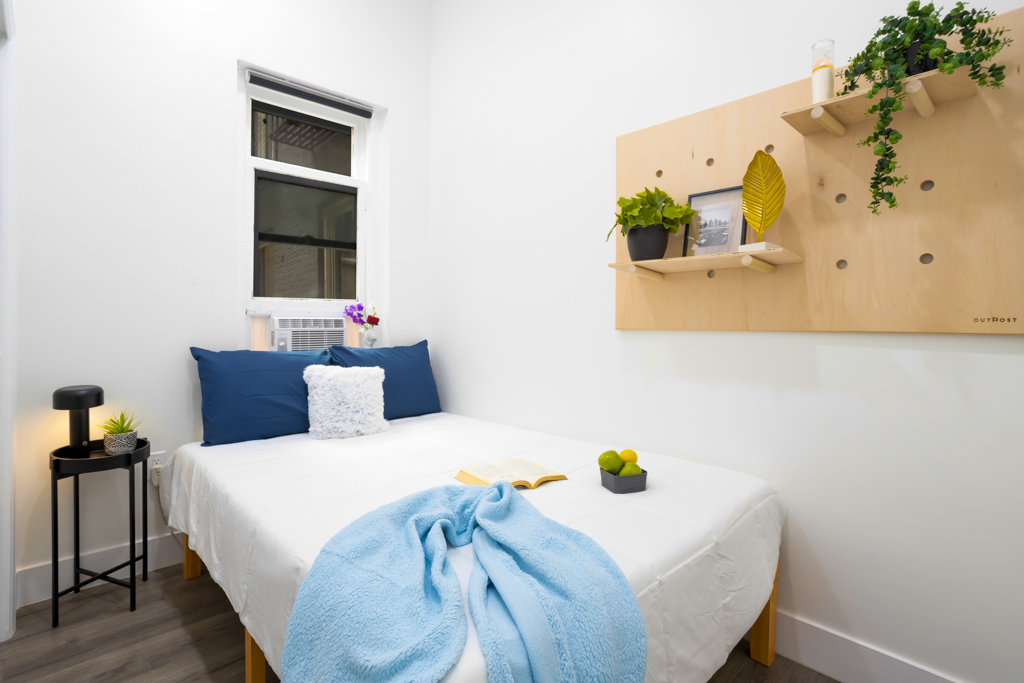Coliving in Manhattan

People live together with the immutability of time. However, it is only recently that the term coliving has become widely used. The following is all the information you need to know about the modern look of cohabitation.
What are the benefits of coliving NYC Manhattan?
The benefits of Coliving in NYC are innumerable; however, some of the more compelling ones include affordability, convenience, and a sense of community. Living with others becomes much more affordable than renting a studio or one-bedroom apartment, especially when you factor in the additional costs of furniture and utilities. Finding and arranging a lease is often time-consuming and stressful; coliving, on the other hand, saves tenants time and nerves by taking on these tasks.
For recent graduates moving to a new city, as well as for anyone looking to expand their social circle in the city, Houses in New York provides an opportunity to meet new people outside of the workplace. All-inclusive co-living also avoids many of the hassles of moving, including dealing with brokers, finding co-tenants, and furnishing the entire apartment. For more information, see our complete guide to the benefits of co-living.
What's included in the price To Outpost Club!

Fully furnished
Recently remodeled, each home boasts carefully curated designer-picked furniture, top-of-the-line appliances, and well-thought-out details to elevate your living experience with both style and comfort in mind.

Security
Rest assured with our comprehensive security features, including Nest systems, electronic locks, modern intercoms, and advanced access control. Your peace of mind is our priority.

Utilities
Experience worry-free living with utilities managed by Outpost. For typically only $149 a month, we cover gas, electricity, water, and wifi bills for you. Find detailed utility costs on each house page.

Cleaning and maintenance
Maintain a welcoming atmosphere with our dedicated cleaning services, ensuring common spaces are kept tidy for all residents to enjoy.
How to Reserve
Your Spot

Step 1
Fill out a form
Fill out this form and a member of our team will contact you about pricing and availability.

Step 2
Get an offer
Our team will give you a few different options based on your budget and our availability.

Step 3
Rental application
All candidates complete a background check and credit check approval.

Step 4
Sign & Pay
Then you'll pay your deposit, sign the contract, and make your first month's rent payment!

Step 5
Move in
You’re all set!
What to look for when choosing coliving?
Living in West Manhattan's co-living space provides a unique opportunity to enjoy the atmosphere of the most beautiful cities without spending extra money on it. It is undeniable that renting an apartment in some Spanish cities can be a hassle, which makes coliving a special value and importance for today's millennials.
So why not pick the greatest option available? Ultimately, the choice depends on the preferences of each. Are you interested in living in the city center or outside it? Is saving important to you or money doesn't matter? Are you looking for a full range of services, or is a less burdensome option right for you? Opportunities abound in the world of coliving short-term Manhattan, and it's up to you to find the one that best suits your preferences and become part of this modern concept.
What are the types of coliving spaces in Manhattan?
Cohabitation opportunities range from planned communities of individuals to companies creating brand-new buildings for shared use by entrepreneurs and digital nomads. Living together options include:
- Informal (traditional) shared housing. Here, a group of people jointly rents and equips housing. They can come together through various channels.
- Adult hostels. This form is similar to college dorms or hotels: small (but usually private) bedrooms along corridors leading to shared spaces shared by many people. A significant number of people can live here.
- Housing cooperatives. Members of cooperatives take shifts to clean, cook, and manage the home. Governance is exercised democratically through meetings in which leaders are elected, and issues are decided. These are usually large houses where from 15 to 100 people live.
- Cohabitation. The concept began to become popular in the 1960s in Denmark. Such communities usually unite several generations around a common home, with common areas and organized events.
- Communes. These are purposeful communities, often in rural areas, bringing together people with common beliefs or aspirations for self-sufficiency. Thus, options for living together can range from informal neighborhoods to organized communes with varying degrees of community and amenities.




Why are co-living apartments in Manhattan so popular?
According to the US Census, the number of young people aged 18 to 34 living alone decreased by 10.3% from 2005 to 2015. The ability to provide yourself with your own apartments is becoming more difficult. As more young people delay marriage and leave their parents' homes, living alone has become a popular lifestyle choice. Many individuals opt for coliving communities, which offer a sense of neighborhood and community.
This trend is not limited to the US. In Hong Kong, the average dwelling area per person is 160 square feet (compared to 414 square feet per person in the average apartment in New York). Statistics show that 76% of adults aged 18 to 35 live with their parents. In a rental market like Hong Kong, co-living is becoming a popular alternative for young people to save money in one of the most expensive rental markets in the world. Living alone is sometimes not financially feasible for many people in cities like San Francisco, New York, and London due to real estate rivalry. At the same time, sharing a place with friends may not always be a practical option for newcomers.
Discover the world of coliving in Manhattan, a safe and flexible alternative for single urban residents.
Who will suit coliving Inwood Manhattan, and how do they become its residents?
It is likely that living together will attract the attention of young people who have not yet formed a family and are striving for communication and useful connections. Typically, residents of co-living in Manhattan, New York, include members of the creative industries, IT professionals, and freelancers between the ages of 20 and 35. For them, freedom, a pleasant atmosphere, the presence of interesting people nearby, and the opportunity to do what they love without being distracted by everyday chores are important.
Often, the owners of furnished coliving in NYC Manhattan select among those who want to become residents by conducting questionnaires or interviews with questions about interests, professional activities, and life views. This stage helps build a quality community based on the values and rules of a specific co-living NYC Manhattan, as well as get rid of untidy and unfriendly people who cannot work and live in a team. However, there are also co-livings that you can simply join by paying the rent.
Why is NYC Manhattan studio for rent coliving so attractive to people?
Some of the pluses are the ability to save money on utilities (expenses are shared between residents and included in the rent) and getting rid of household chores.
However, the biggest benefit is communication. Due to the growing interest in co-living, the Space10 design research lab partnered with New York-based studio Anton & Irene to conduct an online study on the future of shared living called One Shared House 2030. More than 14,000 respondents from 147 countries, representing different age groups, became study participants. The results revealed that the main aspect that makes Coliving New York Manhattan attractive is the interaction with other people and not so much the savings or access to shared amenities. The study's authors believe this is not surprising, as the number of lonely people in cities continues to grow. Most of those interviewed expressed a desire to live in small communities of four to ten people. However, families with children would prefer to live in groups of 10-25 people. Important for the respondents is the diversity in age, interests, and professions of neighbors. The lack of personal space is a concern.
The study's authors conclude that this is interesting since now the boundary between public and private space is much blurred. Survey participants are willing to share work areas, gardens, and Internet access, but not bedrooms; the bathrooms seem relatively questionable. Most want equal shares in ownership of a common home. Respondents cited cleanliness, honesty, and tact as the most important characteristics for potential residents of coliving midtown Manhattan, while the ability to be cheerful and endearing was less important.
















